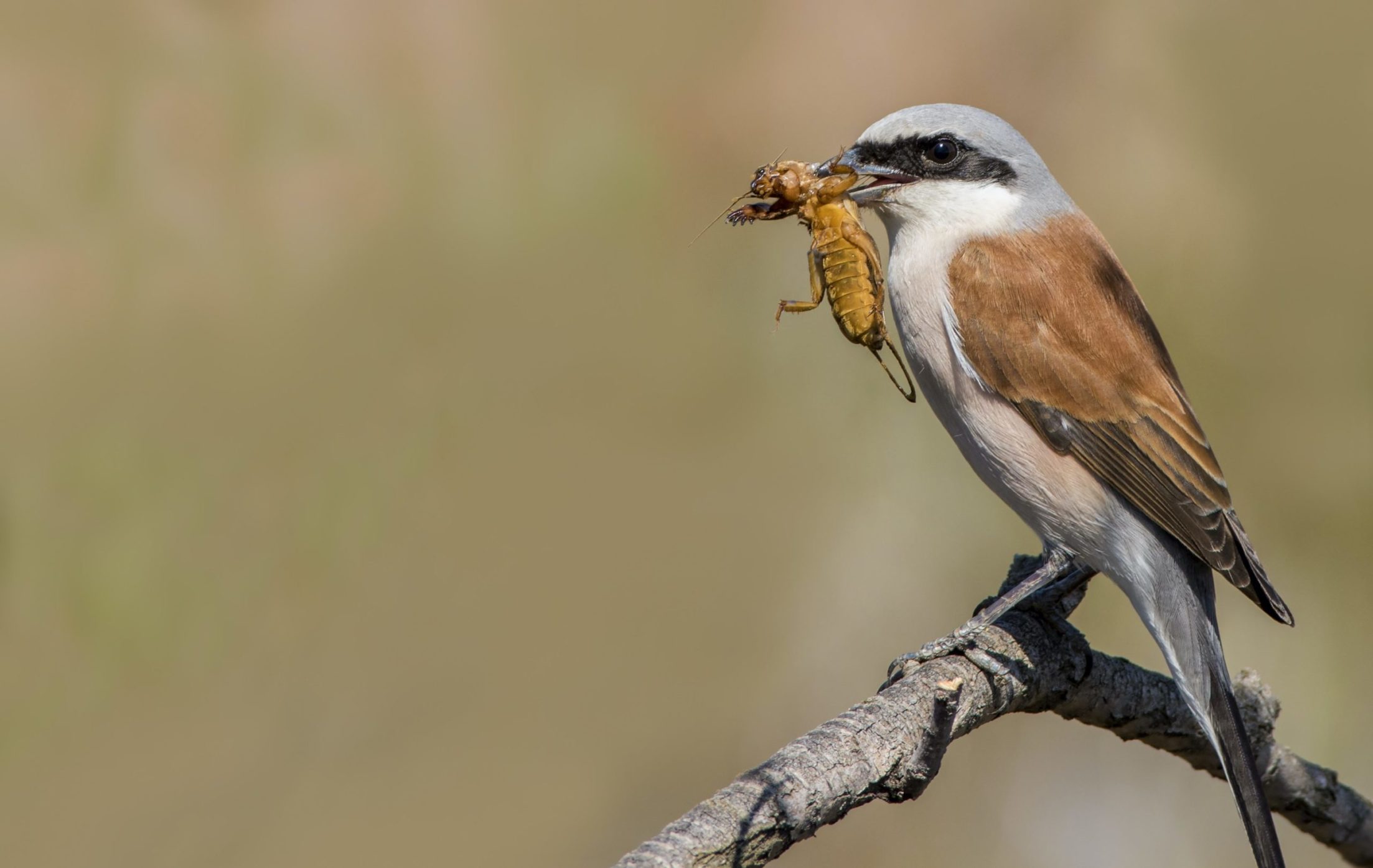Red-backed Shrike (Lanius collurio)
| Family | Shrike (Lanius) |
| Wingspan | 24-27 cm |
| Weight | 21-40 g |
| Appearance | Male: Head blue-grey with black eye patch and white throat. Back reddish brown, belly and breast cream, tail feathers black and white, wings reddish brown with darker edges.
Female: Upperparts reddish brown without conspicuous head markings. Belly lighter with light to strong scaling. |
| Migratory bird | winters in East and South Africa |
| Conservation status | Red List Luxembourg Category 3 – Vulnerable (VU) |
The Red-backed Shrike also belongs to the shrike family with its typical hooked bill and is slightly larger than a sparrow. The german name originates from the erroneous assumption that the Red-backed Shrike always spears 9 prey animals, mainly insects, before eating them. The distribution of the Red-backed Shrike in Europe ranges from the Mediterranean to Scandinavia, only the northernmost and southernmost areas as well as the British Isles are not colonised. The Red-backed Shrike is a migratory bird that spends the winter in East and Southern Africa. The shrike can be found all over Luxembourg. As a habitat it prefers a semi-open to open landscape with sufficient tree and hedge structures used for breeding and hunting. Thorny shrubs are particularly popular with this small shrike. In addition, short grassy areas or areas with less vegetation are important to facilitate hunting. Besides insects, which are the main food, small mammals are also preyed upon. The intensification of agriculture is worsening the conditions for the birds, as structures and food are lacking. This is why significant population declines have also been recorded in Luxembourg.


